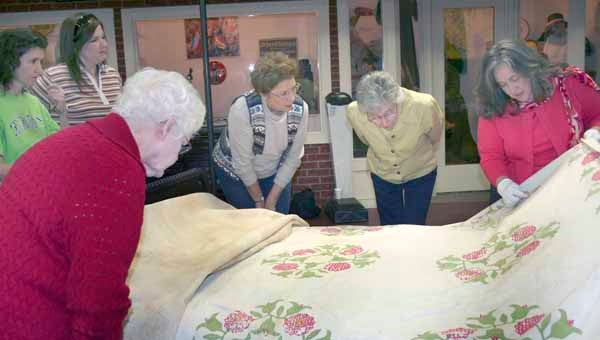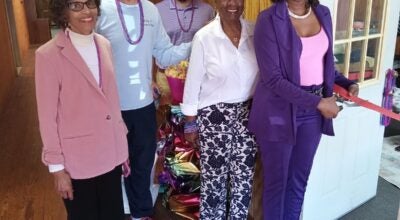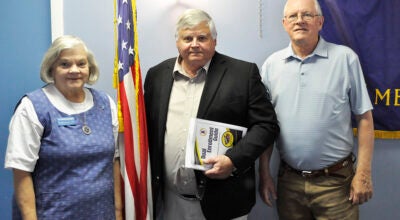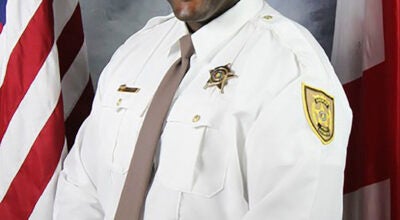History ‘turned’ at the Pioneer Museum
Published 11:00 pm Wednesday, March 13, 2013

Sherry Burkhalter, right, discussed the detailed quilting patterns on a quilt from around 1850. Burkhalter presented a Quilt Turning at the Pioneer Museum of Alabama on Saturday.
Most all of those who participated in the Quilt Turning at the Pioneer Museum of Alabama Saturday had never been to such a thing before.
To a one, they were quilt-savvy but, as far as turning quilts, that was something new.
The Quilting Turning or bed turning was presented by Sherry Burkhalter, who owns Quilted Creations in Headland.
Burkhalter set up a bed with quilts that dated as far back as 1830. As she talked about each quilt, she “turned” it back to reveal the quilt beneath it.
The quilt that topped the bed was quilted between 1830-50 and was a “parlor” quilt.
That quilt was, perhaps, the one that was the most “amazing.”
Jewel Griffin used “amazing” to describe the quilting, as did Jane Hamrick.
Both local quilters said the quilting was so precise that, if they had not known better, they would have thought the quilt had been done by machine.
“But they didn’t have machines back then so we know it had to have been done by hand,” Griffin said, “The stitches were so close and each ‘shell’ was the exact same size as the others. It was amazing.”
Hamrick was also fascinated by the parlor quilt.
“The crossbars were only about three-quarters of an inch,” she said.
“That was amazing to me as was the fact that they quilted every part of the quilt. That’s probably the reason those old quilts were so durable.”
Burkhalter said the parlor quilt was, by all indications, done by one woman.
“It must have taken her years to quilt,” she said. “And, she had to have had help around the house to have that much time for quilting.”
As Burkhalter turned back one quilt after the other, she told the age of the quilt, the pattern, the material used and other interesting footnotes.
“The fabrics used in the earlier quilts were mostly hand dyed,” she said. “Walnuts and berries were popular dyes of the times.”
During the period 1880-1920 Burkhalter said the country was torn apart and many of the quilts expressed the mourning of the people.
Many husbands and sons had been lost in wars and the dark quilts reflected the somber mood of the country.
“As the country began to come out from under all that, the women began to show off their sewing skills,” Burkhalter said. “Around the 1920s, the women began to express themselves loud and clear.”
Burkhalter turned back a “T” quilt — a temperance quilt that expressed, with homespun flair, the views of the quilters.
During the World War II years, red, white and blue were the popular colors for quilters.
“This was a very patriotic time and many quilts reflected the attitude of the country,” Burkhalter said.
As the quilts were turned, up turned the double wedding ring pattern, a crazy quilt, a feed sack quilt, a bride’s quilt, a bars quilt and a star burst and visible were clam shells, polka dots, sawteeth and Indian hatchets.
“I didn’t know what a quilt turning was but I do now,” Hamrick said. “I learned a lot and I had a good time doing it. We appreciate the Pioneer Museum of Alabama sponsoring programs like this.”





